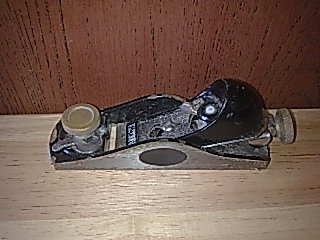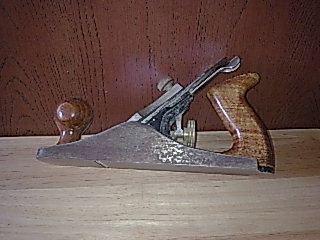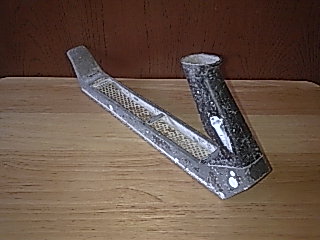|
Favourite Hand Planes
Over the last 40 odd years, I've whittled down the hand planes I regularly use to 3. A block plane, smoothing plane and power plane. Before so much plastic came on the scene, an essential plane was the rebate, which I used mainly to ease window casements. Very few wood windows are now made which has made this plane almost redundant to me. 
Small to TrimThe hand planes I use for precise, close work, such as edging, trimming and slight arissing or rounding, is the 6" x 2" block plane. The blade is set quite low in the body and like the larger smoothing plane, the blade is adjustable which enables the correct depth and angle.Apart from wood trimming I use it frequently when trimming Formica edges of work tops. Standard Planing
Whenever I have excessive amounts to plane but are a little too small to tackle with the panel saw I use then the power planer. It's also because with age I'm getting lazier. For the fine tuning of wood though I use my 10" x 3" smoothing plane because it's precise and controlled. As a guide to any plane edge, if it won't sharpen your pencil, it needs honing to a razor edge. If you haven't sharpened a blade before, a honing guide like a Veritas sharpening system will help you tremendously. Follow this link for a selection of guides and
sharpening stones Jack of All Trades:Until the 90's I had a 24" wooden jack plane. The weight of the tool made planing quite easy but when the blade edge lost its sharpness, it wasn't too easy to re-set after sharpening. Also the blade angle and depth has to be set by sight so without experience you will struggle.The newer jack plane, by that I mean after 1900AD and known as the 'Bailey 5' has a length of between 12 and 15" and is the middle hand planes range. Called 'Jack' because it's classed as the jack of all trades Almost a PlaneNot quite one of the hand planes but closely associated to it is the surform. I use the surform only to plane the edges of plasterboards after cutting them with a Stanley knife,it's not sharp enough for anything else now. I've got to mention though I've had the same tool with the same blade for 53 years.
Jointer or Trying PlaneThe jointer or trying plane is used because of its length of between 20 and 24 " which glides over the hollows in timber and cuts the peaks.It is the best plane to smooth a long and uneven length of wood The 'bees knees' of all planes has been Stanley/Bailey for as long as I've been a carpenter and you can find a good selection of planes by clicking
smoothing plane From Hand Planes return to Woodworking Tools
|





